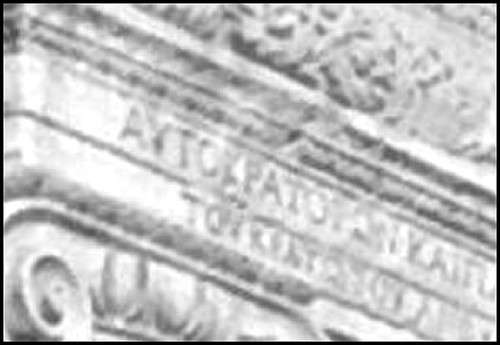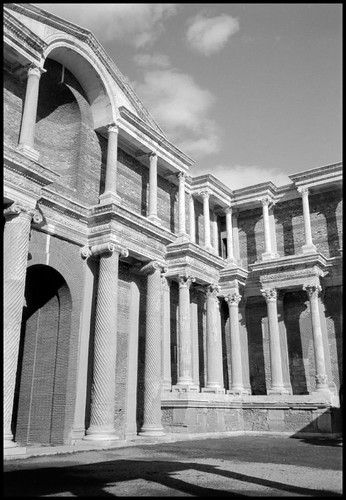charjohncarter
Mentor
In the 1980's I listened to a lecture given by legendary glamour photographer great Peter Gowland.
He used many cameras, among them the Olympus RC.
He was amazed how good the RC lens was and urged people to get one.
I do have some ergonomic complaints with the Olympus 35 RC, but mostly it is great. Some of the hidden features are: it can be used without a battery, it is shutter priority which can be also used by turning the shutter knob to make it aperture priority, completely manual if you want, and it has a flashmatic feature so just set the GN, focus and shoot, not to mention, which the other five also have, is flash synch at any shutter speed.
btgc
Mentor
I do have some ergonomic complaints with the Olympus 35 RC, but mostly it is great. Some of the hidden features are: it can be used without a battery, it is shutter priority which can be also used by turning the shutter knob to make it aperture priority, completely manual if you want, and it has a flashmatic feature so just set the GN, focus and shoot, not to mention, which the other five also have, is flash synch at any shutter speed.
Yes, some quirks are there - narrow aperture ring very close to body, a bit stiff shutter release. Probably, that's all of annoyment and rest is only great stuff. In addition what you mentioned, RC has 5 element lens in contrary to other similar sized compacts with 4 element lenses.
charjohncarter
Mentor
Didn't know that, but I wouldn't be able to tell the difference on a print. It still is a great little camera to travel with. I use a Vivitar 2600 flash with it; either for fill or with the flashmatic for dark shots. And that combination is still small but potent.
ColSebastianMoran
( IRL Richard Karash )
I know it was a poll, but all these cameras make great images.
I think any camera of this era, quality-built, not cheap, with a prime lens will give impressively sharp images.
That's been the case for all that I've tried (Yashica GSN, Olympus Stylus Infinity, Canonet).
I think any camera of this era, quality-built, not cheap, with a prime lens will give impressively sharp images.
That's been the case for all that I've tried (Yashica GSN, Olympus Stylus Infinity, Canonet).
charjohncarter
Mentor
Olympus Stylus Infinity
 Crop by John Carter, on Flickr
Crop by John Carter, on Flickr Sardis by John Carter, on Flickr
Sardis by John Carter, on FlickrTmax100, HC-110h, Copied with a DSLR.
ChrisPlatt
Thread Killer
Yeshiva GSN
That's what I call them too...
Great picture takers all - *if* you can get yours serviced...
Chris
fer_fdi
Well-known
For those knowing the S3,
can you select 1/3 or 1/2 shutter speed increments? (1/160, 1/200...)
Or only whole stops? (1/125, 1/250...)
can you select 1/3 or 1/2 shutter speed increments? (1/160, 1/200...)
Or only whole stops? (1/125, 1/250...)
bmattock
Mentor
I've owned them all, used them all. Olympus RD for the win. Best of breed.
bmattock
Mentor
I'm surprised at how sharp these 70s compacts from Japan are. I have a Petri 7s that is great along with a fully auto Konica C35. My later Olympus Stylus Infinity (auto) is again sharper than most SLR lenses.
Don't forget the lowly Olympus Trip, how did those Japanese designers do it?
But all in all, my Olympus 35RC is my favorite.
Petri Racer is a lovely bit of kit, though it seems put together by Kalashnikov. Great lens.
shawn
Mentor
I haven't really used it on the S3 but there are ways of getting a sorta/kinda manual mode but they are slower than a true manual camera.
If you put a flash cover plate into the hotshoe you disconnect the shutter priority mode. You can then adjust aperture using the flash GN setting ring. Selected aperture varies based on distance so focus first.
When in normal shutter priority mode half pressing the shutter locks the exposure. Point the camera at a light source until it meters the F stop you want and half press the shutter and it will lock it there.
Neither is optimal but can be used for a tricky situation, if you have the time.
As far as the original question I have the GSN and S3. The S3 does have a great little lens on it and it is much smaller than the GSN. It will tell you what F stop it is selecting.
I kinda prefer the feel of the GSN though and its meter can handle more situations. It is aperture priority but doesn't tell you what shutter speed it is selecting, only gives you warnings about slow shutter speed. Viewfinder and rangefinder patch are a bit nicer as well.
When I want small and great quality I tend to use a Rollei 35S more though.
Shawn
If you put a flash cover plate into the hotshoe you disconnect the shutter priority mode. You can then adjust aperture using the flash GN setting ring. Selected aperture varies based on distance so focus first.
When in normal shutter priority mode half pressing the shutter locks the exposure. Point the camera at a light source until it meters the F stop you want and half press the shutter and it will lock it there.
Neither is optimal but can be used for a tricky situation, if you have the time.
As far as the original question I have the GSN and S3. The S3 does have a great little lens on it and it is much smaller than the GSN. It will tell you what F stop it is selecting.
I kinda prefer the feel of the GSN though and its meter can handle more situations. It is aperture priority but doesn't tell you what shutter speed it is selecting, only gives you warnings about slow shutter speed. Viewfinder and rangefinder patch are a bit nicer as well.
When I want small and great quality I tend to use a Rollei 35S more though.
Shawn
bmattock
Mentor
Leave us not forget the mighty Yashica Lynx 14 and relatives. All lens, and what a lens.
bobby_novatron
Photon Collector
Been many months since the OP first started this thread -- I wonder what he/she decided on? Lots of us have chimed in with our personal experiences ... that's what makes reading these forums such fun.
FWIW I voted for the Olympus 35RC. Not the greatest ergonomics but the small form factor makes it easily pocketable. Plus, the lens on the 35RC is a show-stopper. In my experience the 35RC's lens easily can perform with the best of them (Zeiss, Leica, etc.) -- heretical, I know. But I've always been really impressed with the 35RC's image quality -- it remains one of my favourite 1970's Japanese rangefinders.
Here's two Olympus siblings, the 35DC and 35RC.

FWIW I voted for the Olympus 35RC. Not the greatest ergonomics but the small form factor makes it easily pocketable. Plus, the lens on the 35RC is a show-stopper. In my experience the 35RC's lens easily can perform with the best of them (Zeiss, Leica, etc.) -- heretical, I know. But I've always been really impressed with the 35RC's image quality -- it remains one of my favourite 1970's Japanese rangefinders.
Here's two Olympus siblings, the 35DC and 35RC.

ColSebastianMoran
( IRL Richard Karash )
The Yashica Electro 35 series - is also very easy to get service for.
http://www.camerarefurb.com/Services.htm
Yes, Russ has done a fine job for me on several full-size Yashicas. For the smaller bodies and when parts are needed, Mark Hama can fix most.
Put back into good condition, these cameras are great. On the other hand, when they are not and are malfunctioning, can be really frustrating.
ColSebastianMoran
( IRL Richard Karash )
That's what I call them too...
Damn auto-correct!
Texsport
Well-known
Always considered the Olympus 35SP superior to the 35RC.
Texsport
Texsport
FrankS
Registered User
Always considered the Olympus 35SP superior to the 35RC.
Texsport
Same for me.
And didn't the letter in front of Zuiko indicate the number of lens elements?
Santtu Määttänen
Visual Poet
35SP can't how ever be said in the same sentence as others, since even though it's fixed lens RF, it's quite bit heavier and larger. I personally have always preferred 35RC due to the size and the fact that to my eyes the quality of the lens is pretty much identical and I don't feel I miss those about 1.5 stops of light. How ever the 35SP has superior light meter.
Then again 35RC was my first ever camera and has seen hundreds and hundreds rolls of film.. So my views can be "bit" skewed
Then again 35RC was my first ever camera and has seen hundreds and hundreds rolls of film.. So my views can be "bit" skewed
Trius
Waiting on Maitani
35SP can't how ever be said in the same sentence as others, since even though it's fixed lens RF, it's quite bit heavier and larger. I personally have always preferred 35RC due to the size and the fact that to my eyes the quality of the lens is pretty much identical and I don't feel I miss those about 1.5 stops of light. How ever the 35SP has superior light meter. Then again 35RC was my first ever camera and has seen hundreds and hundreds rolls of film.. So my views can be "bit" skewed
As others have mentioned (and is the case for me,) the ergonomics of the RC place it a step down from the 35SP.
The lens on the RC is remarkable for a compact camera, but draws differently from the G.Zuiko on the 35SP. A trained eye could tell the difference on many shots.
Santtu Määttänen
Visual Poet
As others have mentioned (and is the case for me,) the ergonomics of the RC place it a step down from the 35SP.
The lens on the RC is remarkable for a compact camera, but draws differently from the G.Zuiko on the 35SP. A trained eye could tell the difference on many shots.
Certainly the lens ain't the same, but both are very sharp, have nice contrast and build quality is top notch. So I feel that in the end there's no "better" only different and it comes to personal choice.
For the actual subject
Trius
Waiting on Maitani
No argument, I agree it is personal preference. The Minolta 7Si II is not on the list, but I like it as much as the others. The rangefinder on mine was off but I was able to adjust it easily.
Share:
-
This site uses cookies to help personalise content, tailor your experience and to keep you logged in if you register.
By continuing to use this site, you are consenting to our use of cookies.

